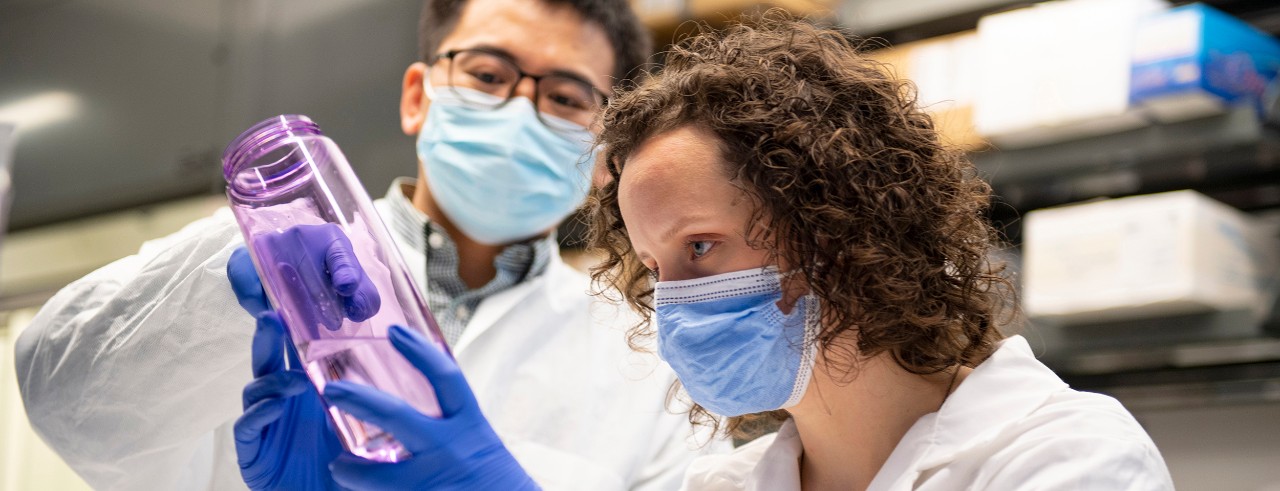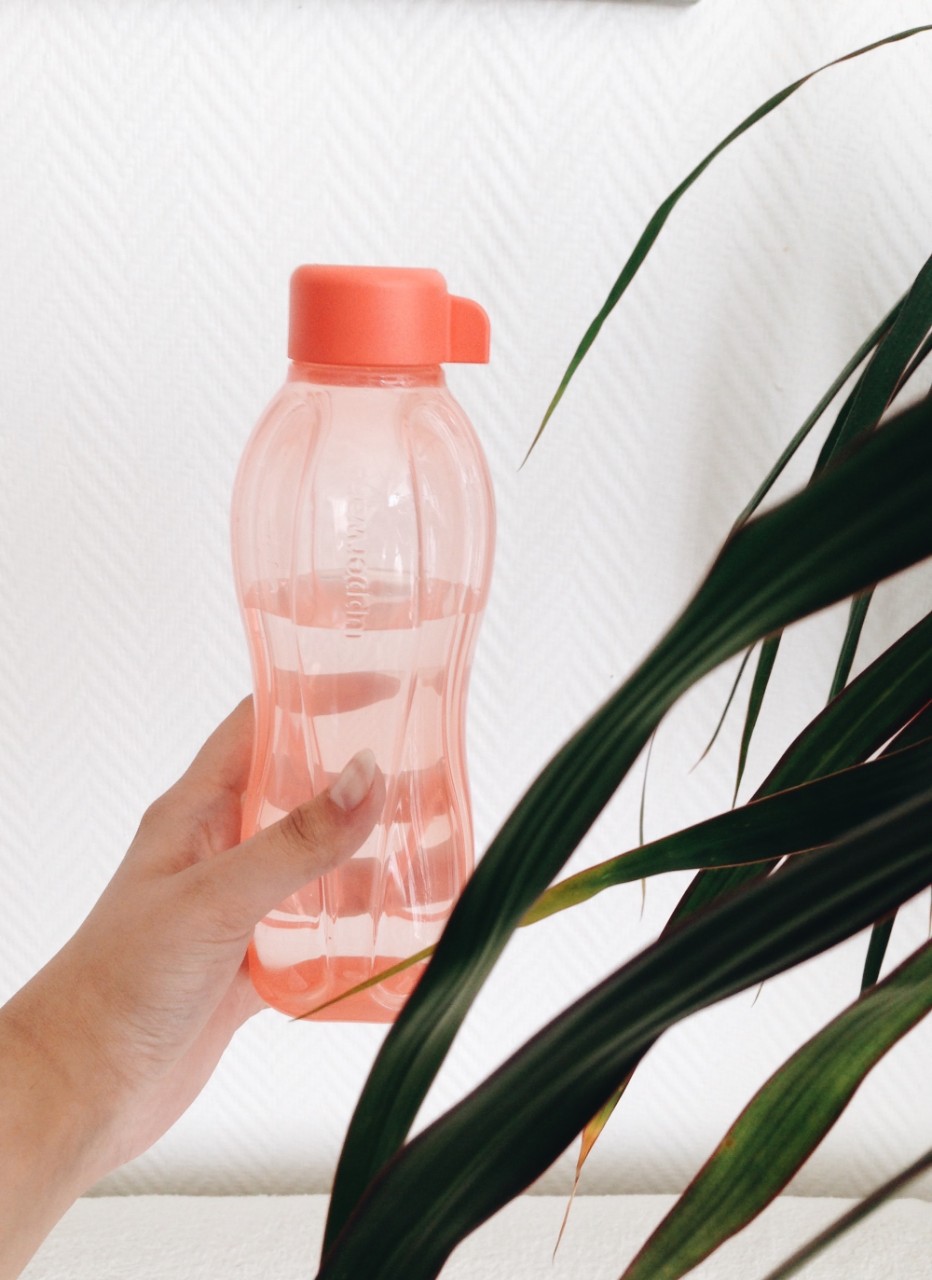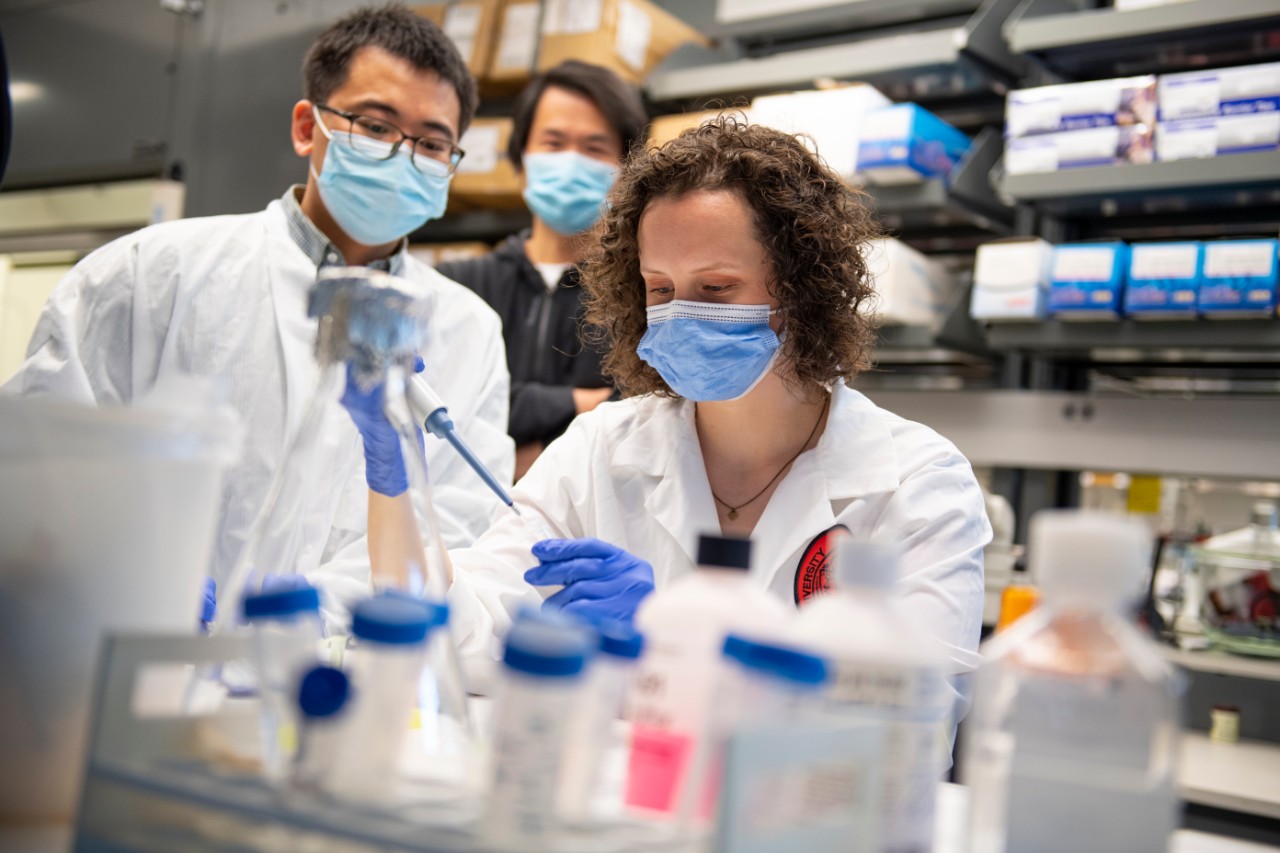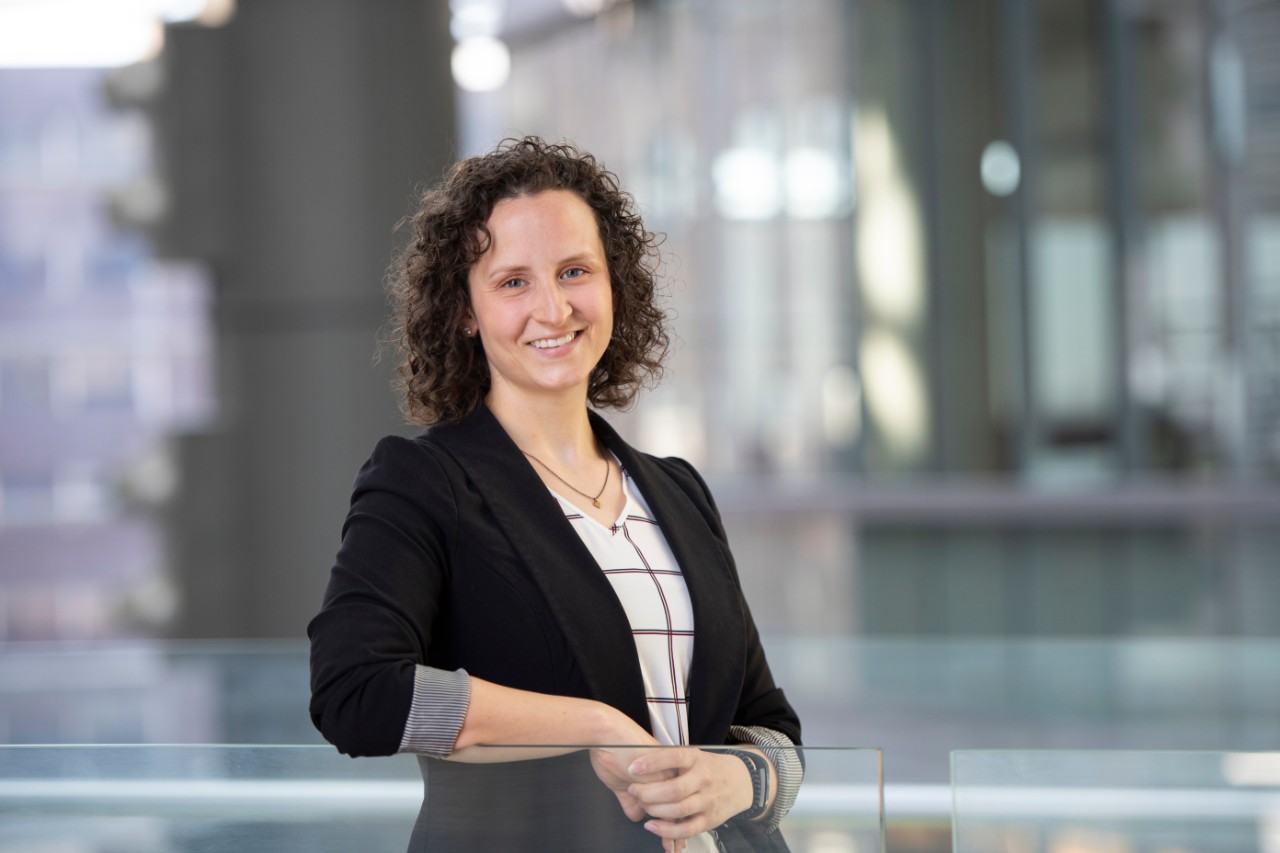
Pop those ‘BPA-free’ drinking bottles into the dishwasher before using them
UC researchers find some water bottles thought to be safe actually have transient BPA release
As part of a laboratory experiment, Rebecca Holmes examined water bottles that had been acquired from abroad expecting to find bisphenol A (BPA), a human-made component commonly found in polycarbonate plastics used to make consumer products.
What she found, however, was that those water bottles were just fine, yet some control bottles purchased in the United States and supposedly BPA-free actually contained traces of the chemical now thought to negatively impact heart health.

Photo/Estera Nicoi on Unsplash
Holmes, a researcher formerly in the laboratory of Hong-Sheng Wang, PhD, professor in the University of Cincinnati Department of Pharmacology and Systems Physiology, was working on her master’s degree in molecular, cellular and biochemical pharmacology in the College of Medicine at the time.
“We believed that it likely was BPA contaminant on the surface of the bottle,” says Holmes, who is now clinical research coordinator at Ohio State University’s Wexner Medical Center. “I thought there is something here. I was thinking people are buying those bottles off the shelves, and they are taking them home and probably not washing them. They are using them so they are consuming BPA.”
Holmes, Wang and Jianyong Ma, PhD, a research scientist at UC, decided to test an array of drinking bottles made of Tritan to see if transient BPA was present. Tritan is a BPA-free plastic. They acquired 10 different Tritan bottles and detected BPA release from two kinds of Tritan bottles. The team then tested whether rinsing, handwashing or dishwashing removed the BPA from the Tritan bottles. The results of their study is available in the scholarly journal Chemosphere. It showed that multiple cycles through the dishwasher was the most effective at removing BPA.
“The release of BPA from these bottles could pose a health threat to the consumer,” says Ma.
Wang says researchers decided to consider cleaning options for Tritan bottles after Holmes did an informal survey of 114 UC students about ways they commonly cleaned brand-name water bottles after purchase. Some used the bottle right away without washing, others rinsed them with water, while others either washed the bottle with water and soap or placed them in the dishwasher for cleaning.

Jianyong Ma, PhD, Hong-Sheng Wang, PhD, and Rebecca Holmes work in a UC College of Medicine lab. Photo/Colleen Kelley/UC Creative + Brand
“Water bottles are ubiquitous on college campuses,” says Wang. “While most of the bottles we tested were indeed BPA-free our study showed that there is a possibility that some may have BPA contamination. If you are concerned about the possibility that the BPA-free bottles are contaminated, washing the bottles after purchase is a good idea. Dishwashing is an effective way of removing the contamination in the specific kind of bottle we tested.”
Wang says it is also a good idea to follow a manufacturer's wash instructions on water bottles or other containers.
Researchers washed the Tritan bottles that showed release of BPA up to six times, and at that point there was no longer any detectable release of BPA. A past study by a different group of researchers shows rinsing was effective in removing BPA release from the Tritan bottles they tested, so effectiveness of washing methods likely depends on the specific bottle.
The bioactivity of the leached BPA from the bottles in the UC study was confirmed by examining the cardiovascular systems of transparent blackworms and the heart tissue of mice exposed to water in these containers over a seven-day period.
“BPA is an endocrine disruptor, and it acts like estrogen and it can affect the cardiovascular system along with other systems,” says Holmes. “It can contribute to irregular heart rhythms.”
Wang explains that as part of the team’s project Holmes visited a plastics manufacturing factory to get a better understanding of how BPA might have gotten onto BPA-free containers.
“I wanted to go to a plant to see how plastic products are made,” says Holmes. “I was able to tour the facility and none of the products in this facility were for consumer purposes. It was to see how the process works. What I found is that similar products with different types of plastic were being made closely together.”
Syam Andra, PhD, associate professor of environmental medicine and public health at Icahn School of Medicine at Mount Sinai, New York City, was also a co-author on the research study.
The study was supported by the National Institutes of Health R01ES027855, University of Cincinnati Center for Environmental Genetics through the NIEHS award P30ES006096, and NIH/NIEHS funding from NIH/NIEHS U2C ES026561 and P30ES023515.
Featured image at top: Jianyong Ma, PhD, Hong-Sheng Wang, PhD, and Rebecca Holmes work in a UC College of Medicine lab. Photo/Colleen Kelley/UC Creative + Brand
Impact Lives Here
The University of Cincinnati is leading public urban universities into a new era of innovation and impact. Our faculty, staff and students are saving lives, changing outcomes and bending the future in our city's direction. Next Lives Here.
Stay up on all UC's COVID-19 stories, or take a UC virtual visit and begin picturing yourself at an institution that inspires incredible stories.
Related Stories
Cancer runs in my family. How can I cut my risk?
April 16, 2025
The University of Cincinnati Cancer Center's Syed Ahmad was featured in a New York Times article discussing ways to reduce your risk of cancer when it runs in your family.
UC's first Marian Spencer Scholar set to graduate
April 16, 2025
Katelyn Cotton, an alum of Cincinnati's Walnut Hills High School, is the first Marian Spencer Scholar to graduate from the University of Cincinnati. Cotton, a political science major, will return for graduate school. She hopes to attend law school in the future.
UC political scientist named Carnegie Fellow
April 16, 2025
University of Cincinnati political scientist David Niven has spent a large part of his career examining how we vote. Now, a $200,000 Andrew Carnegie Corporation of New York fellowship award will help Niven dive deeper into the American polling system and how polling environments impact voters.


